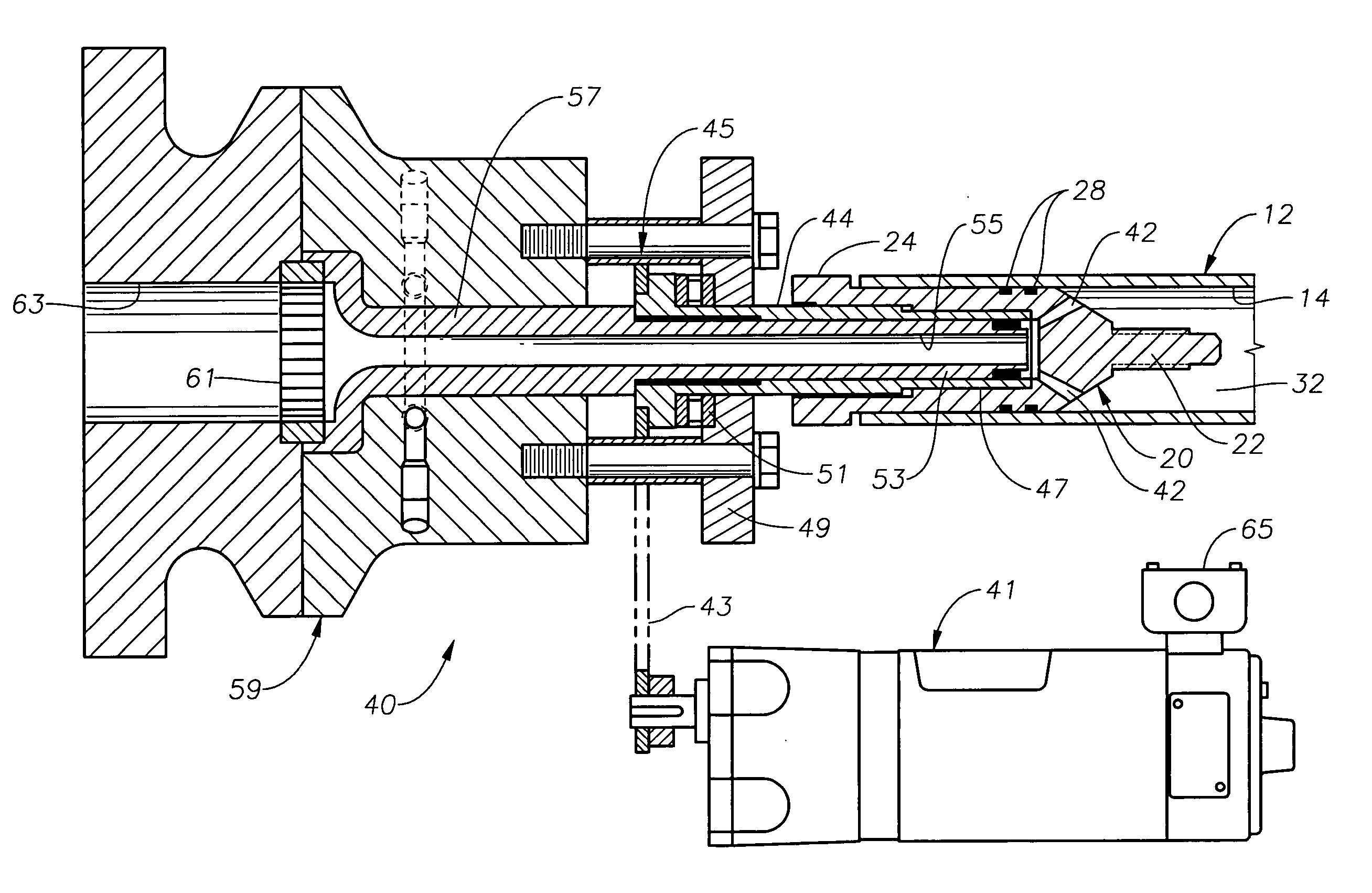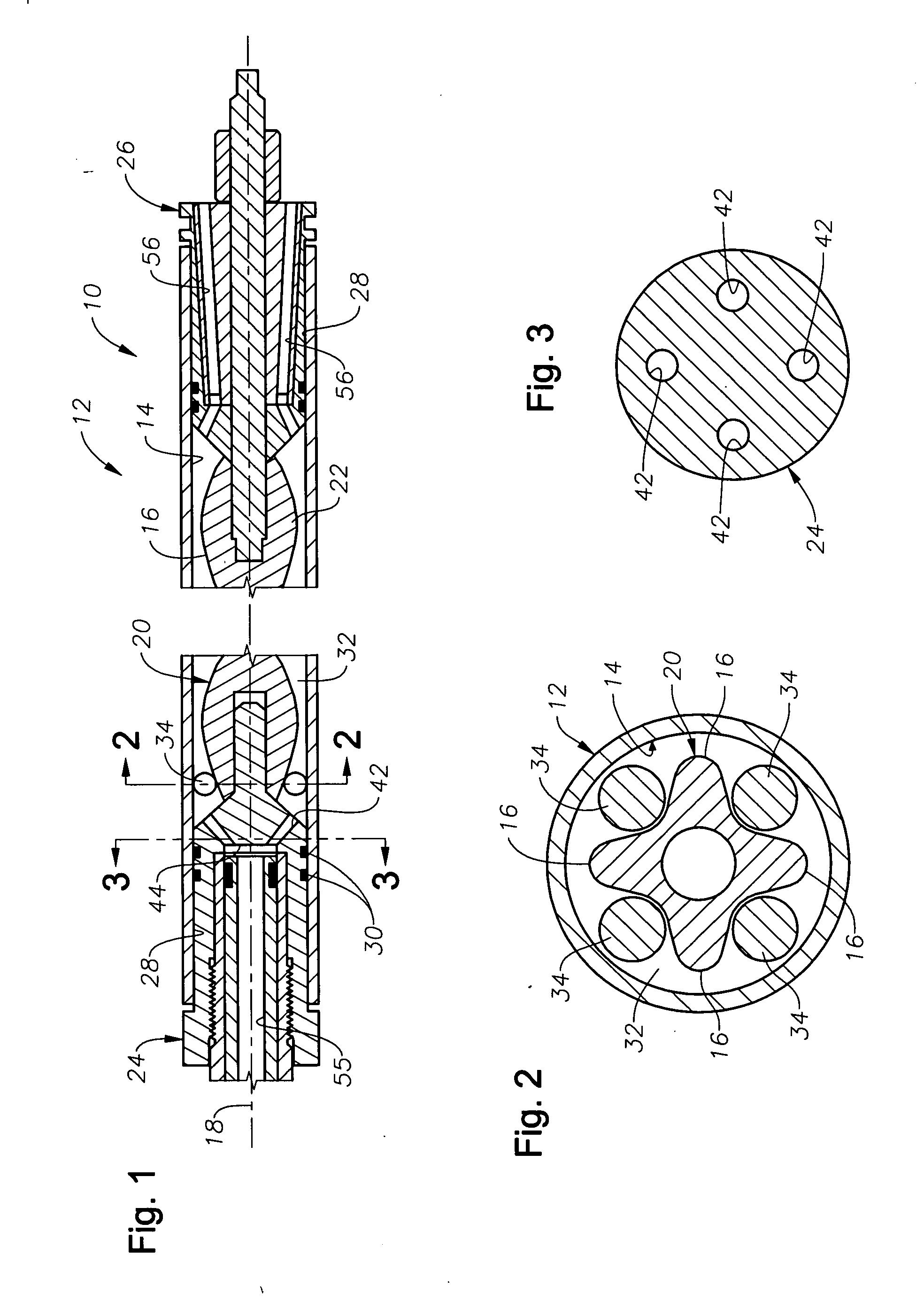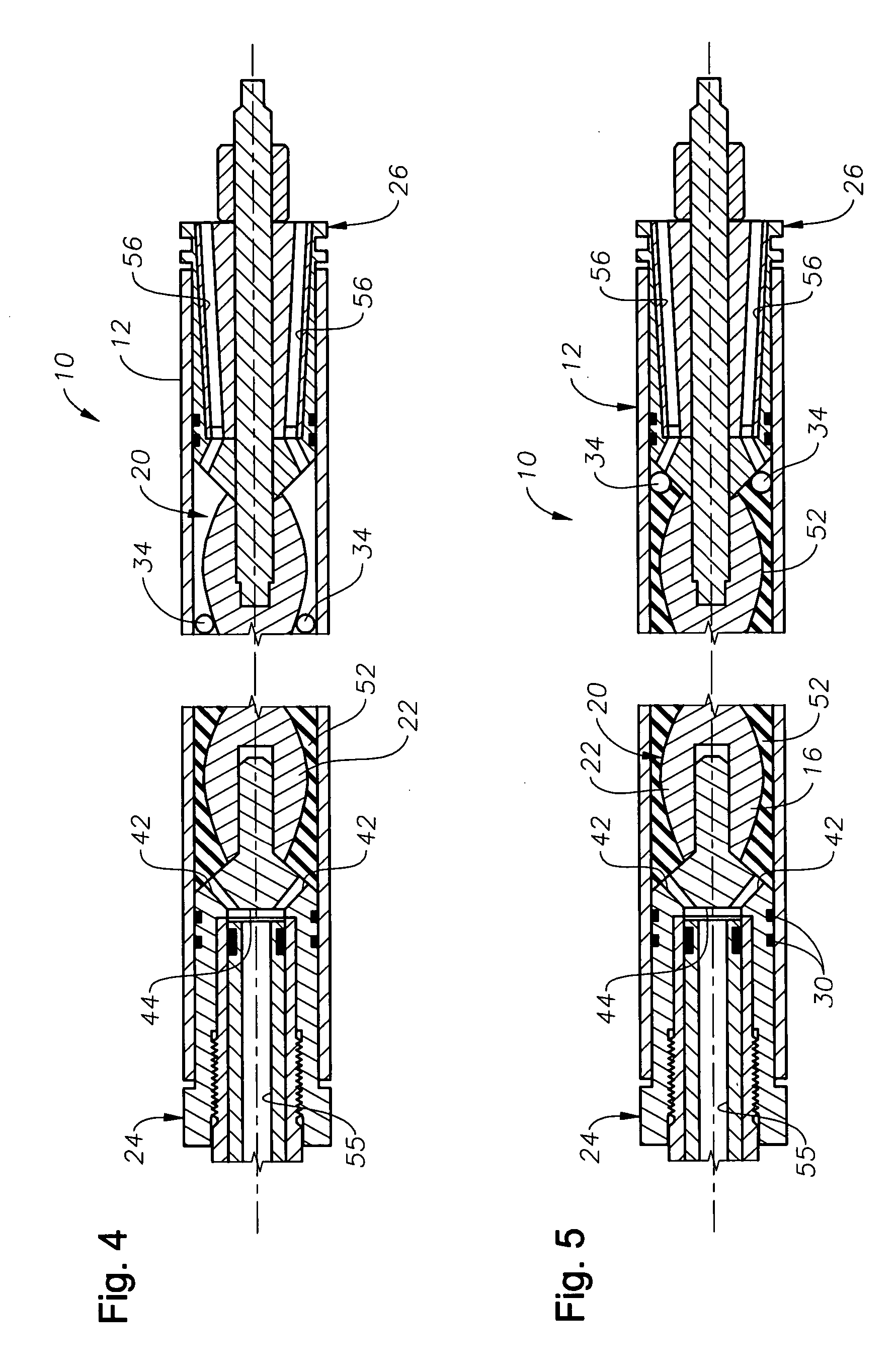Method of molding progressive cavity pump stators
a technology of progressive cavity and stators, which is applied in the direction of machines/engines, manufacturing tools, liquid fuel engines, etc., can solve the problems of rotors flexing and bending during operation, early delamination or other damage to stators, and difficult in practice to uniformly form elastomeric stators
- Summary
- Abstract
- Description
- Claims
- Application Information
AI Technical Summary
Benefits of technology
Problems solved by technology
Method used
Image
Examples
Embodiment Construction
[0021] The term “progressive cavity pump,” as used in the specification and claims herein, is meant to refer to an entire class of devices, including mud motors, and Moineau fluid pumps that utilize elastomer-lined helical stators and rotatable rotors.
[0022]FIGS. 1-5 illustrate an exemplary mold assembly 10 that is constructed in accordance with the present invention and used for construction of a stator for a progressive cavity pump or motor. The mold assembly 10 includes a tubular metal stator housing 12 that defines an interior bore 14. It is noted that, in practice, the stator housing 12 may be 30 feet or more in length. The housing 12 has a central longitudinal axis, depicted at 18.
[0023] A core assembly 20 is removably disposed within the stator housing 12 during the molding and curing process. The core assembly 20 includes a central, reduced diameter portion 22 with an enlarged diameter portion 24, 26 at each axial end. One or both of the enlarged diameter portions 24, 26 a...
PUM
| Property | Measurement | Unit |
|---|---|---|
| Angular velocity | aaaaa | aaaaa |
| Angular velocity | aaaaa | aaaaa |
| Angular velocity | aaaaa | aaaaa |
Abstract
Description
Claims
Application Information
 Login to View More
Login to View More - R&D
- Intellectual Property
- Life Sciences
- Materials
- Tech Scout
- Unparalleled Data Quality
- Higher Quality Content
- 60% Fewer Hallucinations
Browse by: Latest US Patents, China's latest patents, Technical Efficacy Thesaurus, Application Domain, Technology Topic, Popular Technical Reports.
© 2025 PatSnap. All rights reserved.Legal|Privacy policy|Modern Slavery Act Transparency Statement|Sitemap|About US| Contact US: help@patsnap.com



